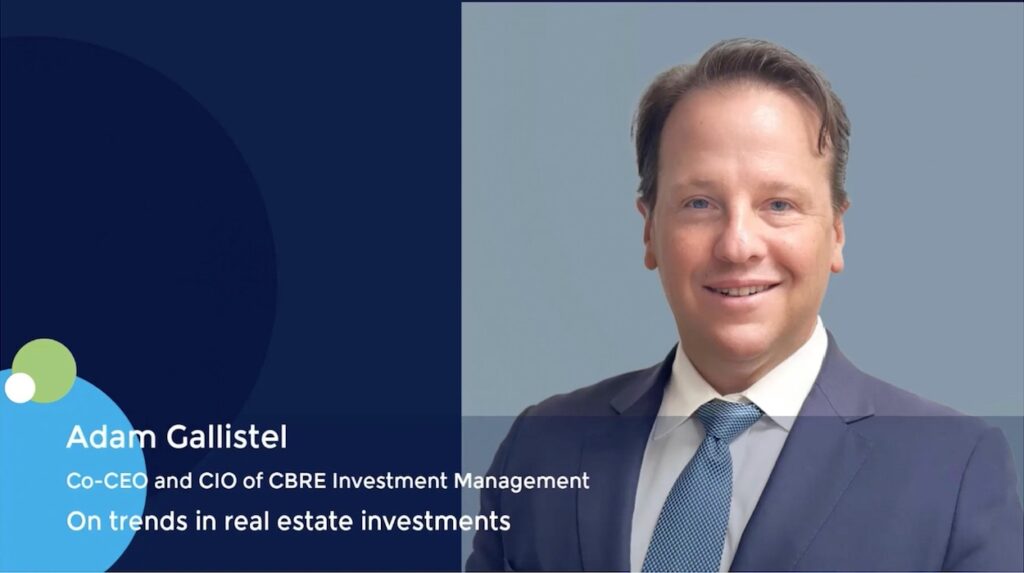Listing PE portfolios: Can the Hong Kong Stock Exchange solve Asia’s liquidity problem?
A handful of alternative investment funds could be trading in Hong Kong before the end of the year, according to multiple industry sources. They noted that managers are already seeking meetings with regulators to discuss the fine detail of tweaks to listing requirements outlined in a recent Securities & Futures Commission (SFC) circular.
It marks the culmination of a years-long lobbying effort by the Hong Kong Venture Capital & Private Equity Association (HKVCA) and a 12-month period spent thrashing out the rules after the territory’s chief executive referenced “opening of new distribution channels for private equity funds through HKEX’s listing” in this 2024 policy address.
On one level, facilitating listings by closed-ended alternative funds expands Hong Kong’s capital markets toolbox. Practically speaking, it opens private equity to a wider investor base. While much is made of the potential long-term participation of Mandatory Provident Fund (MPF) savings schemes, the larger and more immediate target is a slew of high net worth individuals (HNWIs) and small family offices.
International funds already listed in other jurisdictions might be among the first to arrive on the Hong Kong Stock Exchange, but this initiative is also seen as a liquidity mechanism for local managers that want to deliver exits and diversify their investor bases.
“We think there is potential to be a continuation vehicle (CV) option and a permanent capital option combined for existing managers with mature portfolios,” said James Ford a partner at law firm Ashurst who was involved in the HKVCA’s negotiations with the SFC and other stakeholders.
“You could take a strip of an existing portfolio, wrap it into a new vehicle and list it, and retain a substantial portion of the distributions arising from that portfolio as permanent capital for future investments. The listed entity you manage could also be the CV in its own right.”
Other industry participants touch on the same theme, observing the role these structures could play in a China context. With managers struggling to generate liquidity through conventional channels and secondary investors reluctant to underwrite CVs, why not cherry-pick positions for listed products sold to public market investors that may have a greater affinity for the assets?
At the same time, AVCJ spoke to several sceptics in the secondary investor community. In addition to asking whether investment managers and their portfolio companies are comfortable with the added scrutiny of public markets exposure, they contest whether public market investors can assess portfolios in the same way as private equity secondaries specialists familiar with CVs.
“When you have a mixed bag of assets – ideally, a secondary portfolio should be as diversified as possible – it is highly unlikely to trade at its intrinsic value because of the discount it must bear for being diversified,” added Jason Sambanju, CEO of Asia-focused secondaries firm Foundation Private Equity.
“It’s the conglomerate discount in an extreme form. And at least with a conglomerate you have one management team sitting on top of the operating companies, not a collection of investment holdings.”
History lessons
Listed private equity took off in London with much fanfare in the mid-2000s only for a raft of names to become horribly unstuck during the global financial crisis. At the time, Sam Robinson, now a Singapore-based senior advisor at family office North East Private Equity Asia, was working for SVG Capital, which ran the second-largest private equity investment trust listed in London.
He recalled that it took 15 years to achieve daily liquidity of GBP 1m, which meant in 2006, 10 years after the trust was established, the original institutional backers were still there. Pressure mounted as economic conditions worsened, more investors wanted to get out, and liquidity dried up.
“The market perception was that, if public markets are down 25% and the underlying assets in these private equity vehicles are leveraged, they might be down 75%. And then there was leverage in the vehicles, so people were saying it might be bust – no one knew because of the delay in GP reporting,” Robinson said. “As a result, even more investors wanted to get out, so the floor became zero.”
Coller Capital invested in SVG in 2009, taking advantage of the low pricing to get exposure to Permira funds – which made up the bulk of SVG’s portfolio – at a deep discount. It fully exited in 2016 when HarbourVest Partners took SVG private.
Having traded at a premium to net asset value (NAV) before the crisis, most trusts now trade at discounts of 10%-40%. There are two notable exceptions: software-focused HgCapital (NAV of GBP 544m, close to par) and 3i Group (NAV of GBP 2.4bn, up 61%). 3i’s premium is variously attributed to the success of retailer Action, which makes up 70% of the PE portfolio, and strong investor relations.
Those involved emphasize the value these vehicles represent, as permanent capital capable of extracting value from highly illiquid assets and as shop windows for their firms. But the discount remains a sticking point, not least because it deters new share issuance: the London Stock Exchange requires that discounts are applied immediately to any capital raised, so investors lose out as soon as they enter.
Partners Group has USD 78bn in private equity, much of which comes from open-ended evergreen structures with inbuilt liquidity to handle monthly subscriptions and redemptions, transacted at par value. Partners Group Private Equity (PGPE), the firm’s London-listed trust, has EUR 1bn (USD 1bn) in NAV and trades at a 32% discount despite having exposure to the same underlying investments.
“The supply-demand dynamic isn’t working currently, there’s not enough money in there really working on the valuations,” said Cyril Wipfli, a partner at Partners Group. He observed that the cyclicality ultimately evens out, with PGPE achieving the same annual return on NAV and on the share price over a 10-year period.
Richard Hickman, a managing director at HarbourVest Global Private Equity (HVPE, GBP 4.3bn in NAV, 35% discount), one of 15-20 London-listed private equity trusts of reasonable scale, added: “It has been a good experience for long-term shareholders if they buy and hold and ignore the noise that happens in public markets. The challenge is navigating the ups and downs of public market sentiment.”
The HK proposition
Both Wipfli and Hickman expressed an interest in exploring secondary listings in Hong Kong, with the latter underscoring the need to understand the nature of investor demand and the regulatory implications. To date, the UK and Australia are the only markets to get any traction with trust structures.
Yet there remains the overriding question: Why would Hong Kong fare any differently to London in terms of discounts to NAV and limited liquidity? The key factor, according to a source heavily involved in HKVCA’s lobbying efforts, is the contrasting underlying investor bases: whereas London is largely institutional, Hong Kong has a core of smaller, more retail-oriented investors.
“Many institutions active in London have exposure to private equity through traditional channels, so there isn’t much incentive for them to go through the listed markets,” the source said. “In Hong Kong, a lot of small to mid-size groups have no exposure at all. Just to begin allocating to limited partnerships would be expensive – hiring a lot of new people – and it would take a long time.”
Certainly, once government buy-in was clear, regulators moved swiftly to accommodate these structures. Rather than modify Chapter 21 of Hong Kong’s listing rules, which relate to investment companies, the SFC proposed using Chapter 20, the unit trust code. This brings closed-ended alternative asset funds under the purview of the SFC, rather than relying on listing committee approval.
Jeremy Ong, a partner and head of the real estate investment trusts (REITs) practice at Baker McKenzie, pointed to a change in regulatory mindset comparable to the incremental flexibility previously applied to REITs. Chapter 7 of the unit trust code features some specific restrictions – notably a 15% cap on exposure to unlisted assets – and broad references to exemptions. The SFC largely swept these away.
“Previously, the investment restrictions for authorised funds were very specific, limiting the types of alternative asset funds that could be listed. While the SFC were willing to give waivers on a case-by-case basis, this narrow and exception-based approach may have deterred potential applicants,” said Ong.
“Now the SFC have adopted the opposite approach, by replacing the specific restrictions with more general overarching considerations and requirements, such as size and track record. This indicates that the SFC is casting the net wide and will look at everyone on a case-by-case basis.”
On size and track record, funds must have a valuation of at least USD 100m on listing and be run by at least two persons with a demonstrable track record in the management of public funds. There are also provisions covering portfolio diversification – for example, fund-of-funds must have no more than 20% exposure to a single underlying fund – as well as gearing, disclosure, and distribution.
Regarding distribution, there won’t be a retail investor free-for-all. Intermediaries must test non-institutional and non-professional investors to ensure that they understand alternatives.
Neither is MPF participation expected to happen quickly. Sophia Man, a partner and member of the financial services practice group at Baker McKenzie, cited recently introduced spot crypto ETFs as an example. While it is possible to invest in these products under MPF legislation, there are guidelines specifically prohibiting it, such is the regulator’s concern about investors getting out of their depth.
Practical considerations
Further guidelines are expected to be released in due course, with industry participants flagging various areas that would benefit from greater clarity. These include the requirement that portfolios comprise “assets with varying investment lifecycles.” Liyong Xing, a partner in the Asia private funds group at Clifford Chance, questioned whether this fits with the notion of a listed vehicle playing the role of CV.
“Lots of GPs are looking to this as a liquidity solution for LPs and a way of providing permanent capital that can be used for new investments,” she said. “It remains to be seen how this can be structured.”
These criteria do fit the profile of mature products already listed in other jurisdictions, and the SFC circular indicates that requirements could be waived in certain cases where there is compliance with comparable regimes. It is worth noting that putting in place infrastructure to maintain a listing – from disclosure to risk assessment to investor relations – is neither cheap nor straightforward.
“Regardless of the fund size, you still need brokers, public relations, advertising, a dedicated team, and a board of directors. Some functions can be outsourced, but there aren’t many end-to-end providers,” said Hickman of HarbourVest.
He compares the management of a permanent capital vehicle to a perpetual low-level fundraise in which investors must be continually reminded of why they are participating. Expenses typically cover investor education initiatives, marketing and press relations, and incentives for corporate brokers that receive fees and commissions on trades.
Wipfli of Partners Group echoed the importance of incentivising distributors. However, he believes Hong Kong can become a properly functioning jurisdiction for listed closed-ended funds by learning lessons from other markets.
“If there is enough demand, if clients are being educated so they don’t fall into the London trap with a 30% discount to NAV, then maybe it could work,” said Wipfli, who previously spent five years as Partners Group’s Asia vice chairman and participated in several PGPE training events involving bank distribution partners in the region. “The key point is having enough buyers to support an IPO at NAV.”
To Ong of Baker McKenzie, it is all about having content worth selling. Managers have been generating liquidity by transferring private real estate assets into REITs for years, but right now, data centres have particular appeal. For private equity, he suggests that fashion brands might resonate with Hong Kong investors given the longstanding affinity for consumer products in public markets.
Foundation’s Sambanju, who was involved in the London listing of Asia-focused Symphony International Holdings in 2007, is not convinced. He describes the repeated “ifs” as a substantial leap of faith, and questions whether Hong Kong retail investors, let alone more sophisticated HNWIs and family offices, would look seriously at these investment products.
Asked how he would feel if a portfolio GP sought to roll assets into a listing, Robinson of North East Private Equity Asia said he would be concerned about the level of demand and the implications for pricing. “If there is no demand for China assets, for example, it isn’t possible to magic this extra demand,” he added. “When you try to create liquidity out of something illiquid, there is always tension.”
Bigger picture
Last year, Kent Chen, a managing director and head of Asian private equity at Neuberger Berman made the case for listed private equity in Hong Kong in a submission made on behalf of HKVCA.
Highlighting rising retail investor interest in the asset class, he outlined the potentially transformative impact on Asia’s household savings of using listed channels to create an access point where currently there is none. He also noted that Hong Kong’s capital markets are well-positioned to take a leading role in listed private capital in Asia, which would contribute to the broader financial services ecosystem.
In this context, the merits of presenting the option of a listed structure are clear. As to the proof of concept, it remains to be seen. However, an additional – broader – case can be made for these products in terms of shifting dynamics at the nexus of permanent capital and democratisation of alternatives.
“Is this going to be a one-and-done transformation of the market? Absolutely not. But it will be a way to democratise access to portfolios. There’s a real benefit to this,” one investor observed.
Moreover, some industry participants are willing to bide their time before passing judgment. “It’s not how fast, it’s who,” said Ong of Baker McKenzie. “If it takes longer but we get a really impressive who, and that fund succeeds, that is going to be a better base to work from for future products.”














